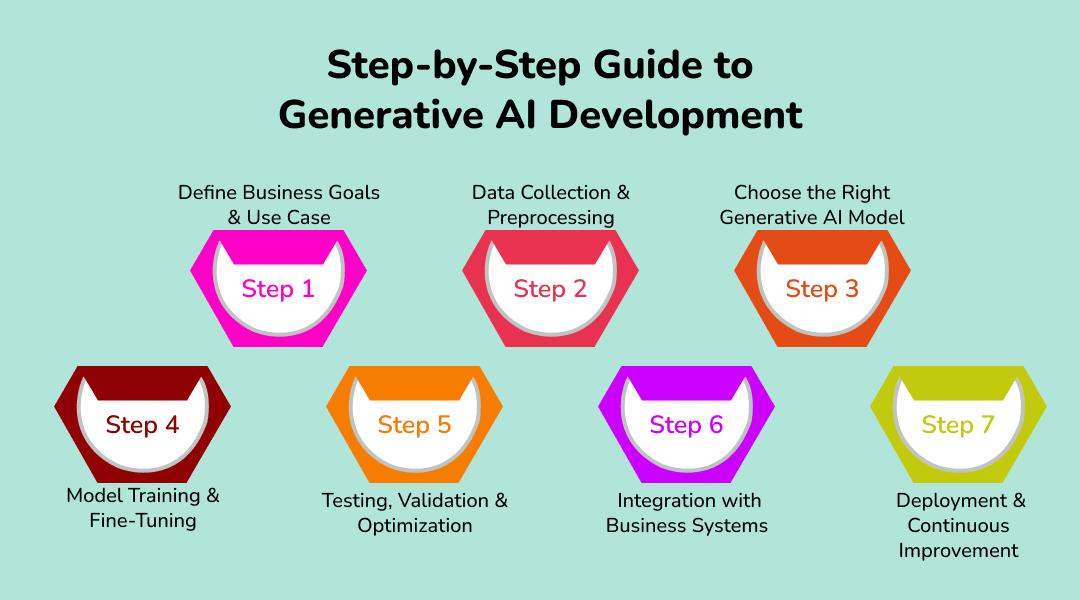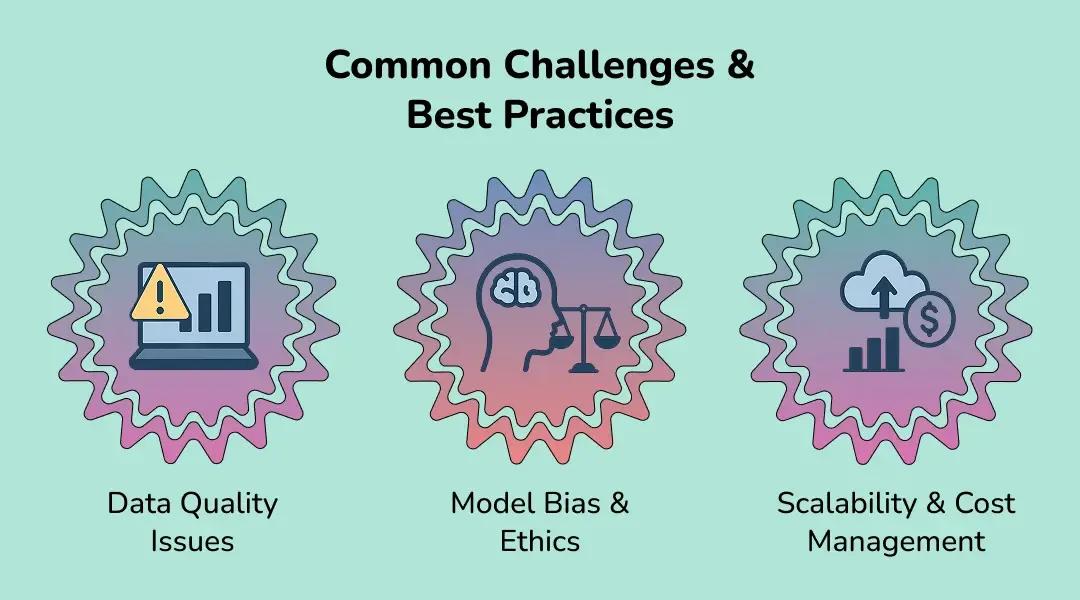A Step-by-Step Guide to Generative AI Development
Let me guess: you’ve been hearing “generative AI” everywhere, from the boardroom to LinkedIn. Promises of content that writes itself, designs that appear out of nowhere, and code that just… materializes. Exciting, right? Also terrifying.
You’re asking: Where do I even start? Which model? What data? How much will it cost before I break the bank?
I’ve been there. I’ve watched startups pour money into fancy-sounding models, only to discover the data was a mess, the ROI was invisible, and the “cutting-edge” solution was actually a Frankenstein.
This guide is different. I’m going to take you from confusion to clarity, step by step. By the end, you’ll understand not just the how, but the why. And you’ll see how KriraAI helps businesses do this without the drama.
Business Benefits of Generative AI
Generative AI isn’t a toy. It’s a business tool, if you use it right.
Cost Reduction & Efficiency
Imagine generating high-quality marketing content in minutes, or producing data-driven insights without hiring a 10-person analytics team. That’s what generative AI can do.
A client of mine, a mid-sized e-commerce brand, reduced content creation costs by 60% within three months of deploying a custom AI model. Not hype. Real numbers.
Innovation in Products & Services
Generative AI opens doors. New product designs. Personalized experiences. Prototypes faster than a human team alone could ever dream.
Here’s a thought experiment: what if your app could generate user-specific content dynamically, instead of relying on pre-written templates? That’s no longer sci-fi, it’s practical today.
Enhanced Decision-Making & Automation
From predictive analytics to automated reporting, AI models can give executives the insight they need, without endless spreadsheets. One of our clients in healthcare used a generative AI model to automate report generation, saving 5 hours per analyst per day. Multiply that across a team. You see the impact.
Step-by-Step Guide to Generative AI Development

Let’s break it down. No fluff. Just actionable steps.
Step 1: Define Business Goals & Use Case
Ask yourself: What problem am I solving? What impact do I expect?
Generative AI isn’t a silver bullet. You need to know what success looks like. ROI, time saved, increased engagement—these metrics shape every decision downstream.
Step 2: Data Collection & Preprocessing
Garbage in, garbage out.
Collect relevant, high-quality data.
Clean it. Standardize it. Label it.
Remove biases where possible.
Fun fact: I’ve seen AI models fail spectacularly because someone thought “more data is always better.” Not true. Smart data beats big data.
Step 3: Choose the Right Generative AI Model
Options include:
Large Language Models (LLMs) – for text, code, conversational agents.
GANs (Generative Adversarial Networks) – for images, simulations, style transfer.
Diffusion Models – increasingly popular for high-fidelity image and video generation.
Choosing the wrong architecture can cost weeks of wasted work. Trust me—you want this step nailed.
Step 4: Model Training & Fine-Tuning
Split your data: training, validation, test.
Monitor for overfitting.
Fine-tune using transfer learning when possible.
(Pro tip: a small, carefully curated dataset often beats a massive messy one.)
Step 5: Testing, Validation & Optimization
Ask: does it actually solve the problem? Run edge cases. Measure outputs. Iterate.
Accuracy metrics
Human evaluation
Performance benchmarks
I’ve personally debugged models where a single mislabeled dataset caused the AI to “hallucinate” nonsense. Painful, but fixable.
Step 6: Integration with Business Systems
AI doesn’t live in a vacuum. Connect it to your apps, CRMs, dashboards, or customer interfaces. Ensure the workflow feels natural.
Step 7: Deployment & Continuous Improvement
Launch is just the beginning. Monitor, retrain, refine. AI models age like milk if ignored.
Tools & Technologies for Generative AI Development
Here’s what I’ve seen work in the trenches:
OpenAI – for LLMs and API integrations
Hugging Face – model hub and NLP tools
TensorFlow & PyTorch – training & custom architectures
LangChain – orchestrating LLM-based pipelines
Custom pipelines built by KriraAI for business-specific solutions
Common Challenges & Best Practices

Data Quality Issues: Garbage data kills models. Invest in cleaning upfront.
Model Bias & Ethics: AI reflects your data. Audit for fairness.
Scalability & Cost Management: Cloud compute costs can spiral; monitor, optimize, and test before full-scale deployment.
Future of Generative AI in Business
By 2025, generative AI will:
Drive hyper-personalized content experiences
Automate complex data analysis across industries
Enable real-time design and prototyping in creative fields
Industries poised for impact: e-commerce, healthcare, finance, media, education.
Conclusion
Generative AI isn’t magic. It’s structured, repeatable, and highly impactful when approached correctly. With a clear roadmap, like the one above, you can move from curiosity to a functional, business-ready AI solution without wasting time, money, or credibility.
Remember: start with the problem. Choose the right model. Train carefully. Integrate intelligently. Monitor continuously. And never forget, the AI is a tool. You’re the strategist.
FAQs
Costs vary depending on data size, model complexity, and deployment requirements. Small-scale models can start under $10k, while enterprise-grade solutions may exceed $100k.
If you have repetitive content, complex data processes, or innovation-driven products, generative AI can add measurable value. A clear use case is critical.
Typical development ranges from 2–6 months for mid-sized applications. Larger, enterprise-scale projects may take longer, depending on model training and integration complexity.
OpenAI, Hugging Face, TensorFlow, PyTorch, and LangChain are industry-standard. Choice depends on your specific use case and tech stack.
Absolutely. Models can be connected to CRMs, dashboards, websites, and mobile apps. Proper integration ensures AI adds real operational value.

CEO
